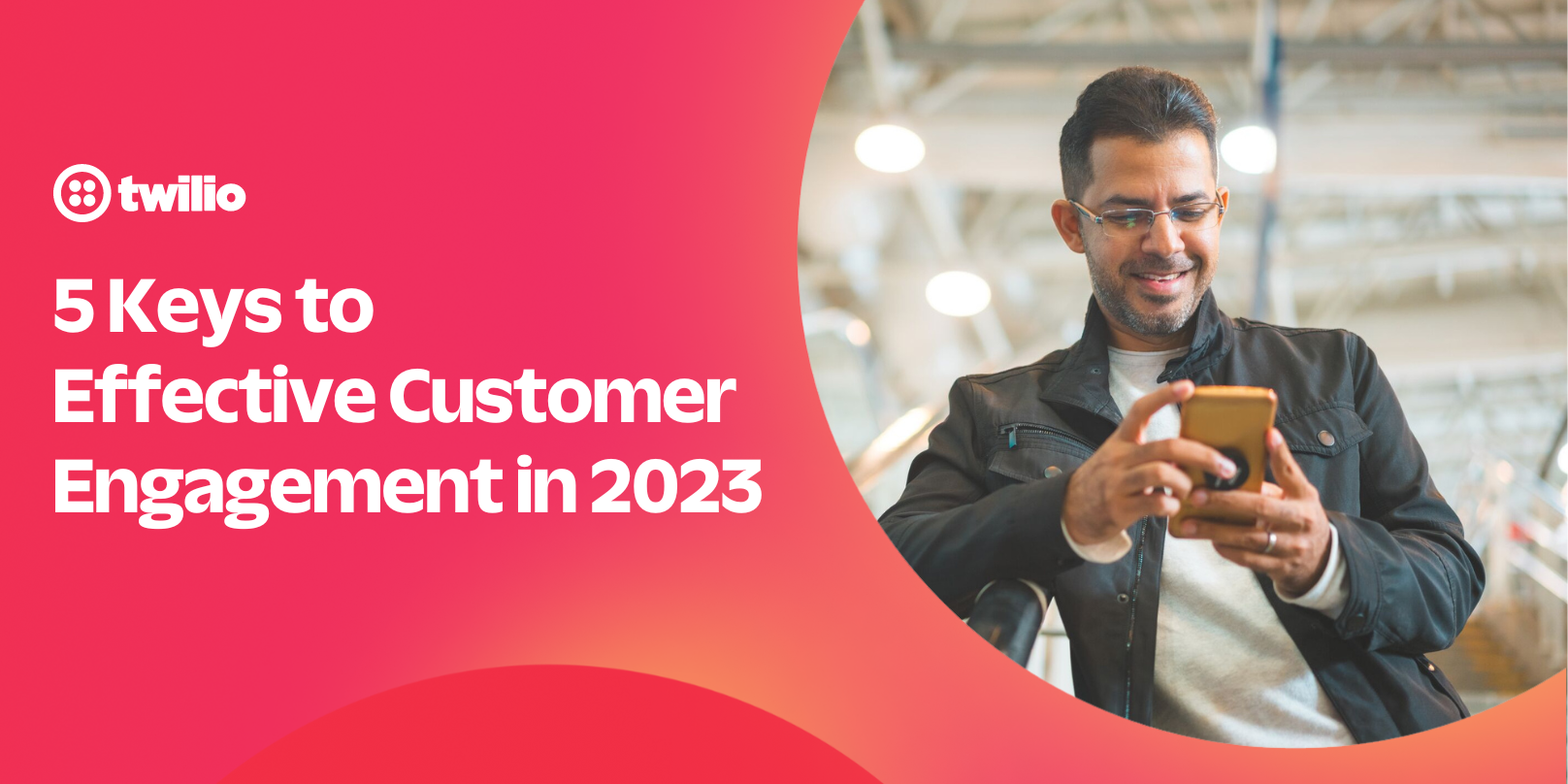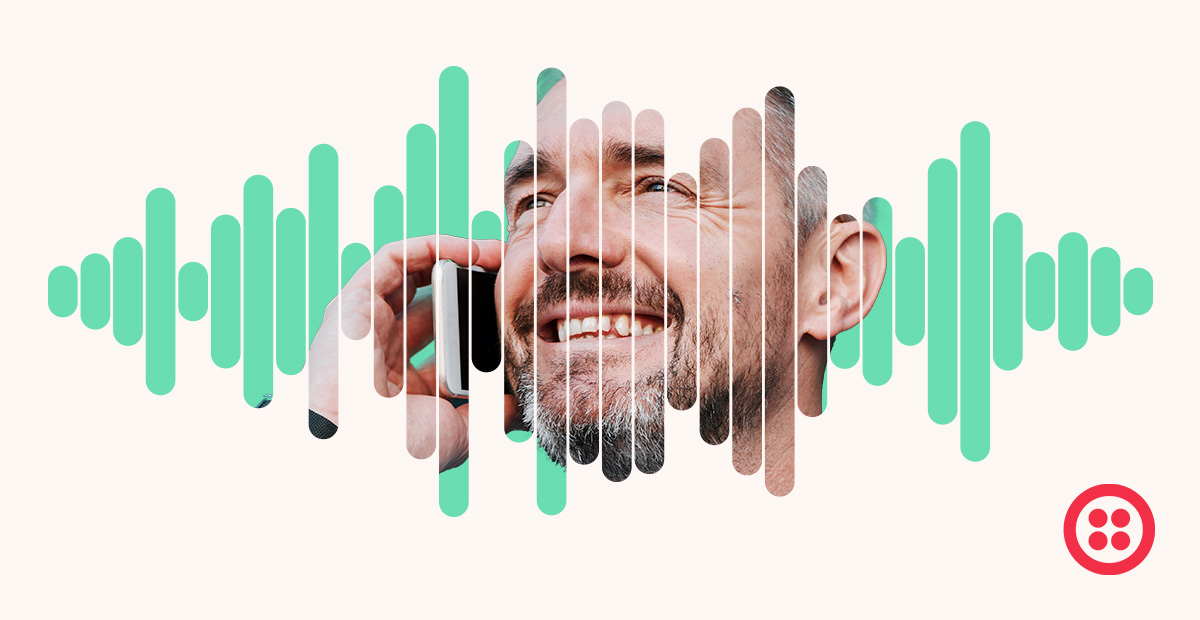5 Keys to Effective Customer Engagement in 2023
Time to read: 5 minutes

Once upon a time, customers would show up at your doorstep at the drop of a digital ad. But affordable acquisition at scale is no longer something companies can take for granted.
It’s not that there are fewer customers. On the contrary, there are more customers than ever available across the internet. But inflation is also at a historic high, companies are cutting headcount, digital competition is fierce, and advertising prices are soaring.
Companies can’t simply replace a lost customer cheaply. After all, they’re dealing with fewer resources, lower marketing budgets, and a shorter customer attention span. In this macro environment, the pressure is on for leaders to build more durable, profitable, longer-term customer relationships.
During our SIGNAL 2022 customer and developer conference, we asked the question on every company’s mind: How do you do more with less? Here’s what we stressed:
- You can’t throw more money at the problem. Instead, organizations need to get smarter about customer acquisition.
- The customers you do have can be worth so much more. You just need to build higher-quality relationships.
There’s an equation that runs the internet: CAC<LTV. CAC is the cost to acquire a customer, and LTV is lifetime value, or how much revenue and profit a customer represents to a business over the course of the relationship. This effectively measures the return on investment for each dollar you spend to acquire a new customer.
Here’s the good news: Our 275,000 customers have taught us a thing or two. Here are five key lessons in digital customer engagement we highlighted during our SIGNAL 2022 vision keynote that will explain exactly how to lower your CAC and increase your LTV.
Lesson #1: Know your customer in real time
No company intends to pay for ads that don’t work, but it happens. Often, they don’t have the right data. Or the data takes weeks to wrangle and isn’t as valuable by the time they use it.
For example, unable to track consumer behavior in real time, Domino's Mexico was limited to sending generic messages to half a million hungry customers. To build a more efficient acquisition strategy, the company leveraged Twilio Engage to connect data across every team and touchpoint, from the point-of-sale system to the website to the mobile app—and decreased cost per acquisition by 65%. With an in-the-moment view of their customer, they now have visibility into which customers are most likely to buy, and can churn out targeted, cost-effective campaigns.
With omnichannel journey orchestration, Twilio Engage is built natively on top of Twilio Segment, the leading customer data platform. At the heart of it all is a customer’s “golden profile” which provides a comprehensive overview of all the clicks and actions performed by your customer.
There’s no data lag. No batch imports. Instead, the closed loop system acts in real time and is powered by the most actionable data, making it easy to activate customer data across the channels that matter most.
From ads on Facebook and Google to email and messaging, Twilio Engage empowers you to build data-driven customer experiences based on a concise understanding of their preferences, habits, and interests. Because it all updates in real time, you can act on insights in minutes.
Lesson #2: Convert customers through conversations
In a perfect world, you attract customers with emails, ads, and content. Then, they click and buy. But more realistically, customers can get stuck and don’t convert, and that becomes wasted ad spend.
This is where Twilio Conversations API can help you take advantage of conversational messaging. Instead of making someone wait days to get an answer through a form, you give customers the ability to talk without the burden of downloading an app. They can connect straight from a browser search, WhatsApp message, Google maps result, Instagram ad, you name it. You can help them—and then convert them—right then and there.
With Twilio, you can also turn that conversation into data that gets stored in the customer’s golden profile. Which means everyone engaging with that customer gets real-time information and context to improve their next interaction. And by giving your customers an option to converse with you at the exact moment of a purchase, you can multiply conversion rates.
Lesson #3: Remove onboarding obstacles
Once you’ve successfully multiplied your conversions, you need to seamlessly onboard those customers. Because if you don’t, that’s acquisition spend down the drain. By simplifying onboarding, you make it easier for customers to interact and conduct transactions with your brand, ultimately growing customer lifetime value.
Twilio Verify is already used by thousands of companies to bring password-less authentication to their onboarding and login flows, enabling customers to verify their identity with phone-based authentication (SMS, email, push notifications). But even that introduces a small amount of friction.
We’re bypassing all that to deliver a truly instant, zero-interaction solution called Verify Silent Network Authentication (SNA). We’ve partnered with 56 mobile operators across 30 countries—and are adding additional carriers all the time—to ensure that when customers sign in with SNA, it takes literally one second to verify. No pin codes, no passwords. We verify the device and phone number with your mobile operator, and you don’t have to lift a finger.
Verify doesn’t just save users time and scoot them out of the funnel. It saves you money. Twilio Verify’s Fraud Guard can detect and shut down anomalous activity, like a spike of one-time passwords that aren’t converting. In fact, using Fraud Guard, one US-based social media company reduced their costs per user by 42%, and improved their conversion rate by 27%.
Today, every Verify customer has access to FraudGuard. So if you’re using Twilio Messaging to authenticate users, upgrading to Verify allows you to take advantage of even faster authentication and protect your company from budget-crushing fraudsters.
Lesson #4: Use data to build customer loyalty
When your customer has a need, you don’t want them to search for it in Google or Amazon. You want to build mindshare in your category so they come to you first.
For example, take iconic guitar maker Fender. In 2015, the company expanded its business with apps, including a guitar tuner (Fender Tune) and guitar lessons (Fender Play). To increase activation for those apps and upgrade app subscribers from free to paid accounts, they knew they had to get a single source of truth for customer data—which brought them to Twilio Segment.
With Twilio Segment, Fender streamlined their e-commerce, web, and digital experience data into a single platform, allowing them to merge the history of every Fender user into a single profile. Once they did that, they were able to tailor each player’s learning experience, increase active players, and, most importantly, reduce churn by 29% for paid subscriptions. Based on engagement, they knew when each customer might be ready for a new guitar, and what kind they might be likely to buy—making the customer experience better, too.
Lesson #5: Turn your agents into trusted advisors
Now that you’ve reduced churn, you’re going to want to train customers to come to you first the next time they have a need. To do this, your customers need to know that your team—not a web search—is the best way to find assistance.
We have many Twilio customers doing just this. They know their agents aren’t just there to just close tickets. They’re there to build trust and relationships. For example, at Nordstrom, they’re “personal shoppers.”
When you empower your team with data and tools to make every interaction more personalized, you can effortlessly turn service conversations into value conversations, and the defining moments that build lifelong relationships. In 2023, build a stronger business by acquiring the right customers and delighting them—and doing it more efficiently than ever before, with Twilio. Learn more about the key benefits of customer engagement platform and how they can help you do just that.
Amanda Garcia is a Principal Content Marketing Manager at Twilio, Inc. Passionate about all things tech and media, you can find her visiting her favorite coffee shops and bookstores in San Francisco.
Related Posts
Related Resources
Twilio Docs
From APIs to SDKs to sample apps
API reference documentation, SDKs, helper libraries, quickstarts, and tutorials for your language and platform.
Resource Center
The latest ebooks, industry reports, and webinars
Learn from customer engagement experts to improve your own communication.
Ahoy
Twilio's developer community hub
Best practices, code samples, and inspiration to build communications and digital engagement experiences.


